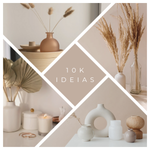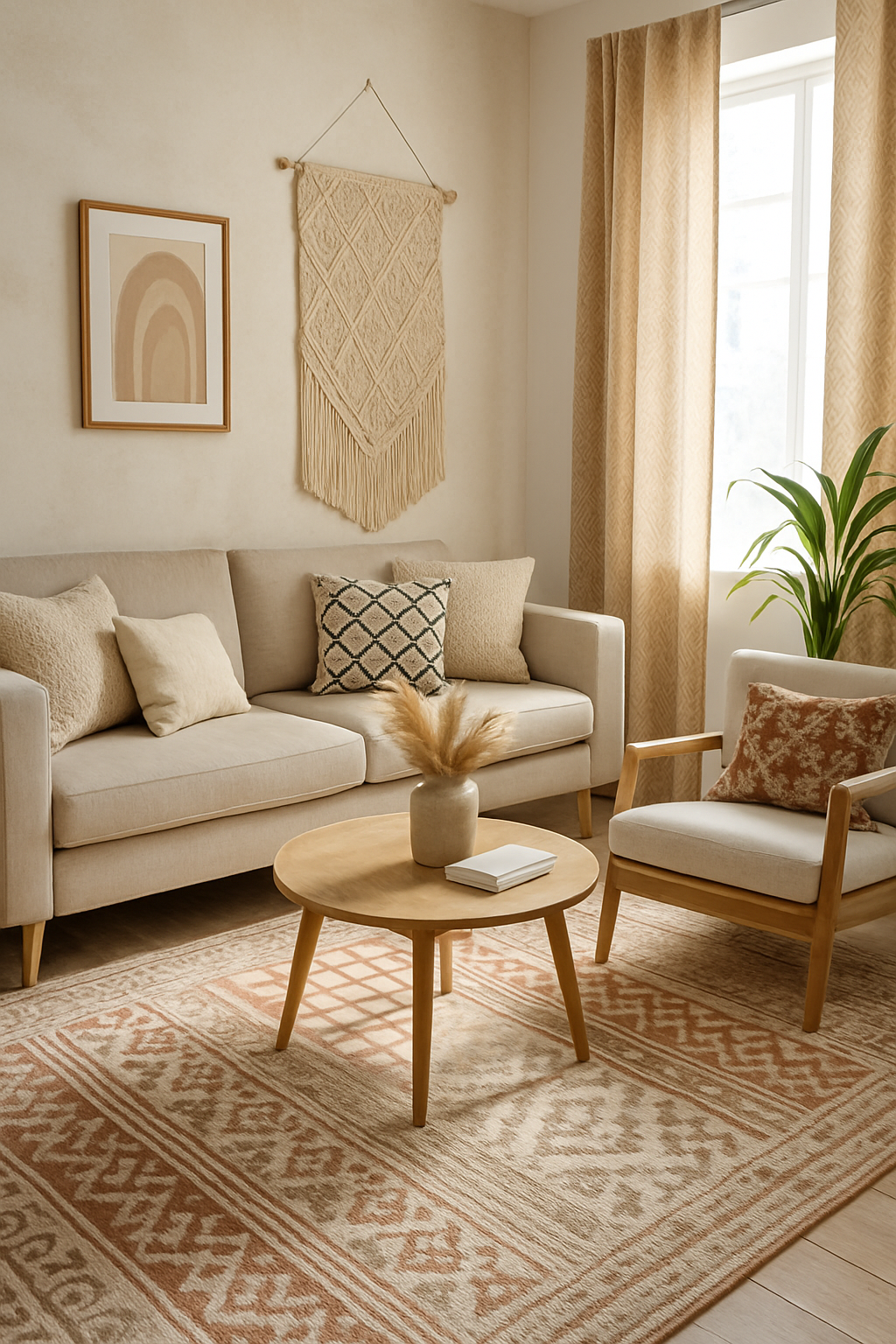In small apartments, the secret to a well-designed home isn’t always more furniture or larger rooms—it’s often the visual depth created by patterns and textures. These design elements add dimension, interest, and a layered look that can make even compact spaces feel more expansive and curated.
In this guide, you’ll discover how to use patterns and textures strategically to enhance your small home, from walls and floors to soft furnishings and decor. Let’s explore how to create a space that feels rich, cozy, and more spacious—all through surface detail.
1. Understand the Role of Patterns and Textures
- Patterns engage the eye with repeating shapes or motifs—stripes, florals, geometrics, etc.
- Textures affect how surfaces look and feel—smooth, rough, soft, woven, matte, glossy.
Using both together in a balanced way adds visual rhythm and stops a room from feeling flat or sterile.
2. Use Light and Subtle Patterns to Expand Visual Space
In small rooms, opt for light-colored patterns that don’t overwhelm.
Examples:
- Pale stripes on rugs or wallpaper
- Soft geometric prints on curtains or cushions
- Tone-on-tone damask or herringbone on walls or upholstery
Avoid overly busy, high-contrast prints—they can shrink a room. Instead, go for muted or medium-scale patterns that add interest without dominating.
3. Try Vertical Patterns to Increase Height
Want your ceilings to feel taller? Use vertical elements to guide the eye upward.
Ideas:
- Striped curtains that hang floor to ceiling
- Vertical wall paneling or beadboard
- Tall bookshelves with vertical orientation
- Narrow wall art or gallery walls arranged top to bottom
Verticality adds a feeling of spaciousness and elegance to compact spaces.
4. Layer Textures for Depth
Texture adds tactile and visual richness, especially important in minimalist or neutral spaces.
Combine materials like:
- Linen and velvet cushions
- Woven rugs over hardwood floors
- Rattan light fixtures with smooth plaster walls
- Wool throws on leather chairs
Layering 2–3 textures per area (sofa, bed, desk) keeps things cozy and multidimensional.
5. Incorporate Natural Materials
Natural materials inherently add texture and warmth, which is perfect for small homes that need both personality and softness.
Add touches of:
- Jute (rugs, baskets)
- Wood (furniture, shelving)
- Stone or concrete (planters, tabletops)
- Rattan or cane (chairs, light fixtures)
They ground the space and keep it from feeling sterile or flat.
6. Use Patterned Rugs to Define Spaces
Rugs can do double duty: visually expand your space and anchor furniture groupings.
Tips:
- Use geometric or tribal prints in neutral tones
- A rug with a subtle border draws the eye outward
- In studio apartments, use different rugs to define “zones” like living, sleeping, or working areas
Layering a small printed rug over a large plain one adds both texture and style.
7. Mix Patterns Mindfully
Yes, you can mix patterns—even in small apartments. The key is cohesion through color and scale.
Rules of thumb:
- Stick to a consistent color palette (e.g., all earth tones or black + beige + white)
- Pair one bold pattern with one subtle one
- Vary scale: large florals + tiny dots, wide stripes + narrow checks
A rule of three (max 3 patterns per room) helps keep things balanced.
8. Textured Walls for Subtle Drama
Walls are one of your largest surfaces—use them to add texture without taking up space.
Options:
- Paint with a matte or plaster finish
- Peel-and-stick textured wallpaper (brick, linen, shiplap)
- Wood slat panels or wainscoting
- Faux concrete paint or limewash
This adds dimension without color, ideal for renters or minimalists.
9. Add Textural Contrast in Soft Furnishings
Fabrics are the easiest way to vary texture. Mix smooth and nubby, matte and shiny.
Layer:
- A chunky knit throw over cotton bedding
- A velvet cushion next to a leather chair
- Silk-look curtains paired with linen blinds
This tactile diversity keeps the room feeling rich and welcoming.
10. Use Mirrored and Glossy Textures for Light Play
Textures aren’t just about softness—glossy or reflective surfaces can also help bounce light around, making rooms feel larger.
Try:
- Mirrored furniture or wall accents
- Glass tabletops or shelves
- Glossy ceramic vases or plant pots
- Brushed metallics (brass, chrome)
Mix with matte surfaces for contrast and balance.
11. Keep the Palette CohesiveTo prevent a small room from feeling chaotic, unify your textures and patterns with a shared color scheme.
Choose:
- 2–3 main colors (e.g., cream, olive, and walnut)
- 1 accent color (e.g., rust or gold)
- Consistent undertones (all warm or all cool)
This creates visual harmony, even if your space is layered and eclectic.
12. Bring Texture Up the Walls and Ceiling
Don’t forget vertical and overhead surfaces. Adding pattern or texture above eye level adds sophistication and unexpected dimension.
Ideas:
- Wood beams or faux beam panels
- Patterned or fabric pendant lighting
- Wallpapered ceilings (use subtle prints)
- Hanging textiles or tapestries
A fabric hanging above the bed or desk can double as both decor and soft sound absorption.
13. Combine Hard and Soft Textures for Balance
Mix opposites for a pleasing effect—hard with soft, smooth with rough.
Combos to try:
- Concrete wall + velvet armchair
- Glossy tile + woven rug
- Rattan pendant + crisp white walls
These contrasts add depth, making a small apartment feel layered and lived-in.
14. Use Patterns to Distract from Awkward Layouts
Got a weird corner or narrow hallway? A well-placed pattern can draw attention away from flaws.
- Hang a bold piece of art at the end of a hallway
- Use wallpaper or decals on a wall that lacks windows
- Lay a patterned runner down a long corridor
Your eye will follow the pattern instead of the architecture.
In small apartments, every design choice carries weight. Patterns and textures give you powerful tools to transform your space—without needing extra square meters or major renovations.
By layering textures, mixing patterns mindfully, and using materials creatively, you can make your home feel bigger, more comfortable, and full of life. It’s all about contrast, cohesion, and a little experimentation.

